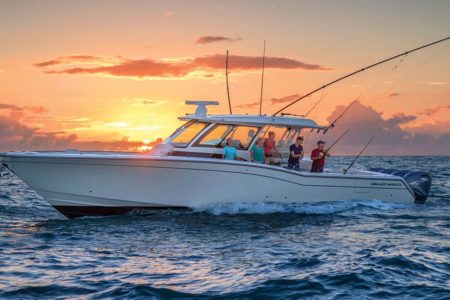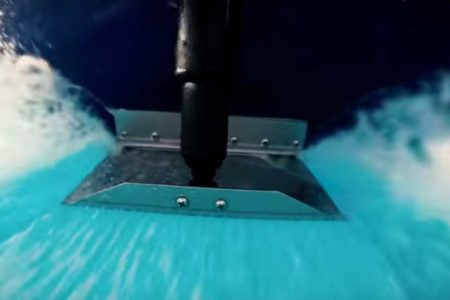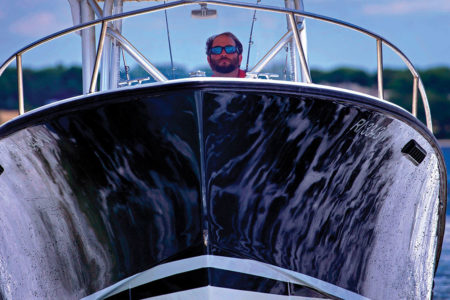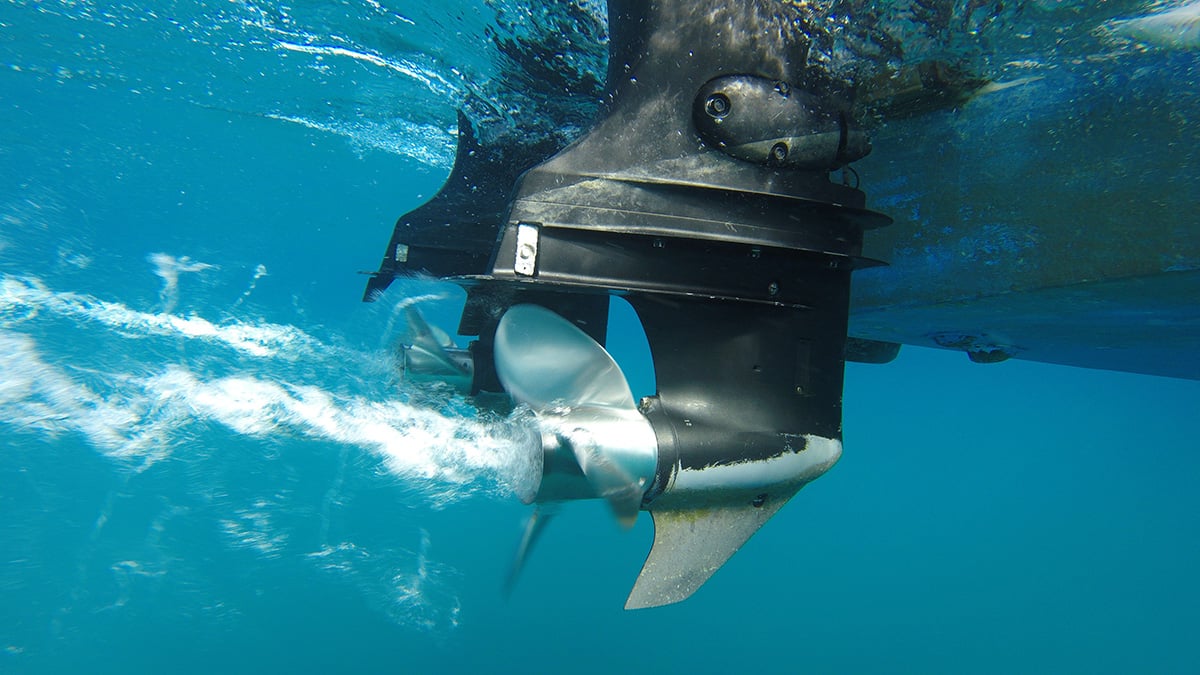
You love your boat. It has taken years to get it outfitted and made as fishing efficient as possible, but your outboards are getting long on hours and you need to know those engines will get you home from the blue water trouble free. Repowering provides the comfort that having new engines on the transom provides, but it is also an opportunity to take advantage of the latest technology and the benefits provided by that technology. I have repowered over a dozen boats throughout the years, so I speak from firsthand experience regarding the real world challenges and costs. There were both painful and pleasurable lessons that I learned and I share them with you in this month’s Boat Sense feature.
Four-Stroke vs Two
The latest boating industry stats that I reviewed at last year’s Ft. Lauderdale Boat show indicated that for new boat sales, four-stroke outboards continue to dominate the scene, with over 90 percent of new boats sold having four-strokes hitched to their transom. This trend started gaining momentum back in 2002 with the introduction of Yamaha’s first big-block V6 F225 four-stroke and was accelerated by the 2004 introduction of E-10 gasoline and has been continuing its forward march ever since. As next-gen four-strokes have become lighter, less complex and more reliable, more coastal, river and lake boaters are becoming increasingly at ease with 100-hour oil changes (equivalent to changing their car’s oil every 3,000 to 5,000 miles) replacing the requirement to add two-stroke engine oil to their fuel or oil injection tank. But two-strokes have advantages as well, the biggest being their power to weight ratio.
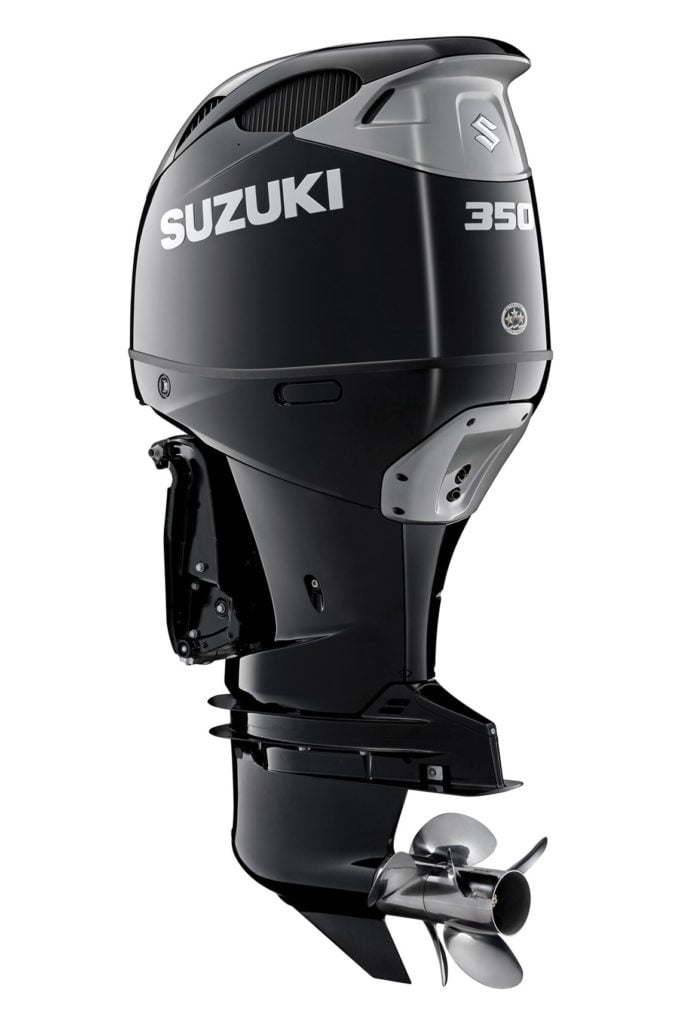
BRP’s Evinrude is all in with this bet, with 100 percent of its outboard manufacturing efforts dedicated to E-TEC and E-TEC G2 production. Mercury Marine continues to offer its OptiMax two-strokes and Tohatsu/Nissan still produces a number of small and midrange two-strokes that employ a similar direct injection operating system to Merc’s Orbital technology. I ran Merc OptiMax 200 V6s for five seasons (repowering each year) on my old Phoenix 27 charter boat, and they actually achieved better range and fuel economy than the three sets of Suzuki DF225 four-strokes that followed the Mercs. They were faster overall, faster at slower RPMs and the direct injection outboards popped that boat up on plane with a full load faster than any four-stroke. Plus they were 100 pounds lighter each and kept my aft scuppers out of the water, a critical safety requirement. Looking forward, there are a lot of next-gen four-strokes that I would like to own and run, but I’m not shunning two-strokes either. I am keeping my mind and options open. When comparing one operating system to the other, you need to look at all of the facts and then make the right decision that is best for your situation.
The first generation of four-strokes all had one thing in common – they were heavy. When you add all of those extra four-stroke parts like an oil sump, valve train, etc., the engines definitely increased in both mass and weight. For example, the original Honda in-line 6 cylinder BF115 weighed in excess of 500 pounds and the Yamaha F200/F225 V6 four-strokes were over 600 pounds. Compare that to a Merc 225 OptiMax of that era that pushed the scales at about 510 pounds.
Four-strokes will save you the cost of two-stroke outboard oil, but they do require additional maintenance, like oil and filter changes every 100 hours of use, and some require periodic valve adjustments, which are two expenses that don’t impact two-stroke owners. Four-strokes that dead-head half of their cylinders with every turn of the crankshaft need more cylinder mass to compete with the peppier propshaft sea horses generated by two-stroke powerplants that are firing all of their cylinders with every rotation of the crank. This added displacement also contributes additional mass, driving the weight factor of a four-stroke even higher compared to the two-stroke option. If you are repowering a post 2002 boat, going with a four-stroke repower is a no-brainer. When considering a new outboard for a pre-2002 vessel, there is a concern regarding which solution will work best, since these boats weren’t designed with the requisite buoyancy aft that is needed to keep cockpit and engine well scuppers above the waterline with the added weight on the transom. However, some of the latest next-gen four-strokes are solving the weight loss challenge nicely and might be a perfect fit for your pre-2002 legacy hull.
On the flip side, although two-strokes typically generate the best horsepower-to-weight numbers, outboard engineers who I’ve talked with agree that the life span of a well maintained four banger is generally longer than that of a two-stroke. Two-strokes require adding a special oil blend to the fuel system via an offline injection tank (at $30 to $40/gallon), plus room to store it somewhere onboard, with the requisite power wires, oil alarms and supply hoses attached to your engine. Depending on how much oil your two-stroke will consume and how much you buy it for (quart bottles vs 55-gallon drums), two-strokes add to the cost-per-mile operating expenses that might exceed the periodic oil changes of their four-stroke brethren. I am not making a case for either technology being superior to the other, just trying to explain the nuances. I currently own two four-strokes and one two-stroke outboard and I am convinced that each is at the top of its game for its intended purpose.
New Life
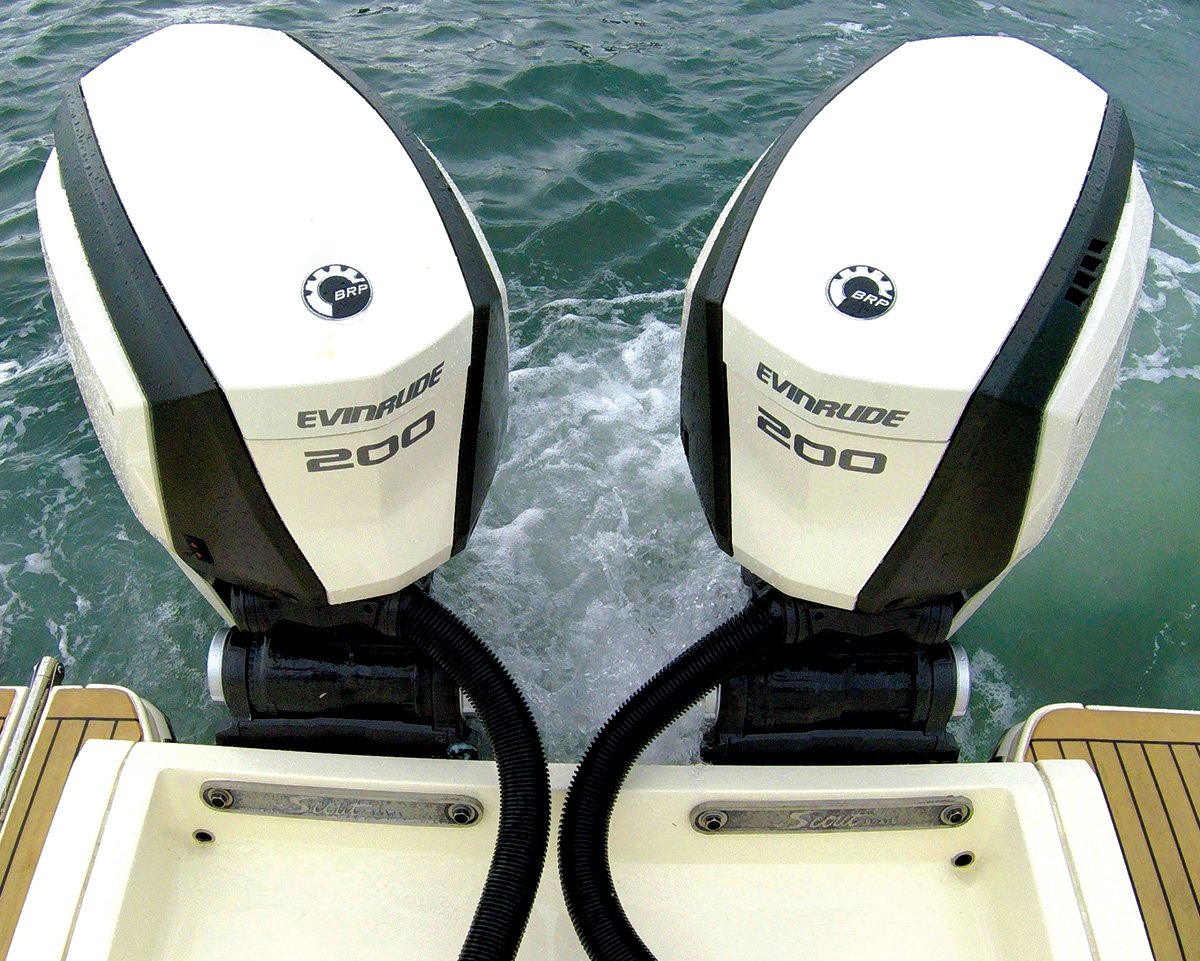 Repowering your boat will definitely breathe new life into it and if you go with the extended five- to six-year warranties offered by some engine manufacturers, you can look forward to many seasons of hassle-free ownership, at least from a propulsion standpoint. One decision that you will need to make is do you stick with the same engine brand manufacturer or not? There are certain cost efficiencies when sticking with a Yamaha/Yamaha, Evinrude/Evinrude, Tohatsu/Tohatsu, etc. repower process. The gauges are likely the same, as are the control cables, fuel hookups, battery and electrical connections, and overall functional compatibility. But this is not always the case, if you are upgrading from an old Yamaha 200 HPDI two-stroke to one of their popular new F200 in-line four cylinder four-strokes, it may require a totally different landscape of gauges and controls. If you stick with an analog F200, you might be good to go, but if you prefer a digital fly-by-wire electric model, then you will be reinventing the wheel, with a lot more cash spent on purchasing additional parts and the labor to install them. Ditto if you are going from a Mercury to a Honda or vice versa; you will probably need to replace all of the aforementioned items and possibly a few things more that weren’t mentioned. Some engines like Mercury’s new 115 Pro XS high-output four-stroke are capable switch-hitters and can work equally well with either analog or digital gauges.
Repowering your boat will definitely breathe new life into it and if you go with the extended five- to six-year warranties offered by some engine manufacturers, you can look forward to many seasons of hassle-free ownership, at least from a propulsion standpoint. One decision that you will need to make is do you stick with the same engine brand manufacturer or not? There are certain cost efficiencies when sticking with a Yamaha/Yamaha, Evinrude/Evinrude, Tohatsu/Tohatsu, etc. repower process. The gauges are likely the same, as are the control cables, fuel hookups, battery and electrical connections, and overall functional compatibility. But this is not always the case, if you are upgrading from an old Yamaha 200 HPDI two-stroke to one of their popular new F200 in-line four cylinder four-strokes, it may require a totally different landscape of gauges and controls. If you stick with an analog F200, you might be good to go, but if you prefer a digital fly-by-wire electric model, then you will be reinventing the wheel, with a lot more cash spent on purchasing additional parts and the labor to install them. Ditto if you are going from a Mercury to a Honda or vice versa; you will probably need to replace all of the aforementioned items and possibly a few things more that weren’t mentioned. Some engines like Mercury’s new 115 Pro XS high-output four-stroke are capable switch-hitters and can work equally well with either analog or digital gauges.
Space Age Controls
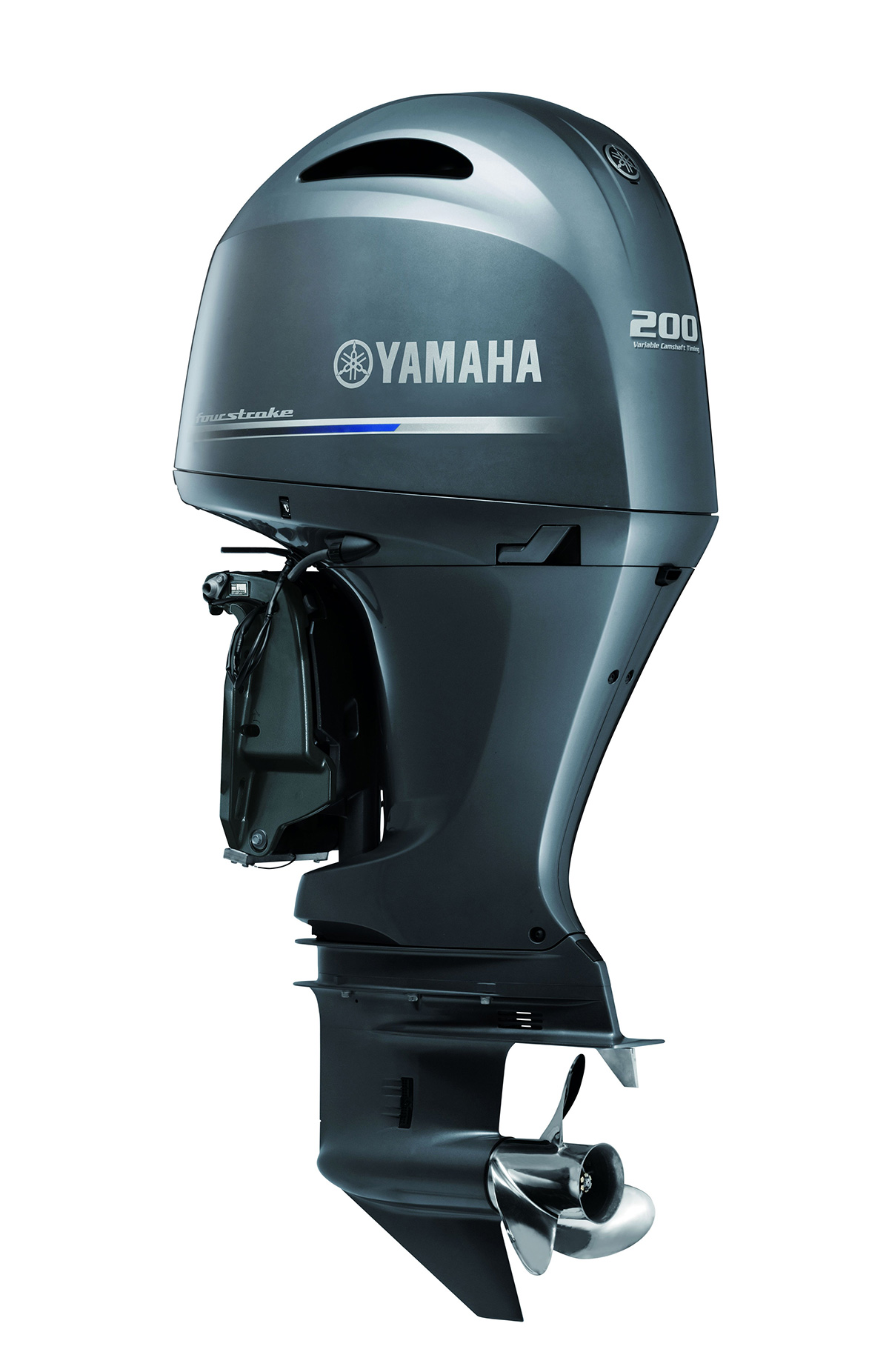 One of the sidebar benefits of repowering is the ability to reinvent the transom of your boat. Boat steering systems are all the rage these days for the big sportfishing machines and their capabilities are simply mind-boggling. SeaStar introduced their Optimus 360 Joystick a while back, and it has been a great success ever since and is also the basis of Evinrude’s i-Dock System. I-Dock provides 360-degree maneuvering agility with fingertip control, as the operator easily moves the three-axis joystick docking control to negotiate crowded areas, dock the vessel, or stall the boat over an inshore rip or local wreck. Smart Cylinders with rudder position sensors allow twin Evinrude E-TEC engines to be controlled independently or in tandem to maneuver the boat sideways, diagonally, forward and backwards, rotate on its axis or even crab-over sideways to accomplish tricky docking maneuvers. The unique BOOST mode provides increased docking power in wind and water current. I actually field tested this system at a local boat show and it works as advertised.
One of the sidebar benefits of repowering is the ability to reinvent the transom of your boat. Boat steering systems are all the rage these days for the big sportfishing machines and their capabilities are simply mind-boggling. SeaStar introduced their Optimus 360 Joystick a while back, and it has been a great success ever since and is also the basis of Evinrude’s i-Dock System. I-Dock provides 360-degree maneuvering agility with fingertip control, as the operator easily moves the three-axis joystick docking control to negotiate crowded areas, dock the vessel, or stall the boat over an inshore rip or local wreck. Smart Cylinders with rudder position sensors allow twin Evinrude E-TEC engines to be controlled independently or in tandem to maneuver the boat sideways, diagonally, forward and backwards, rotate on its axis or even crab-over sideways to accomplish tricky docking maneuvers. The unique BOOST mode provides increased docking power in wind and water current. I actually field tested this system at a local boat show and it works as advertised.
Yamaha’s Helm Master uses flexible, streamlined rigging that digitally connects an enhanced binnacle control, a high-definition LCD screen, electronic steering, an electronic ignition panel, a theft-deterrent system and an innovative joystick. Together these components form a true drive-by-wire system that responds instantly to your command. Big boats require big power, and big power demands maximum control. Helm Master is compatible with In-Line F200 outboards in twin configurations and 4.2L V6 Offshore and all V8 F350 models in twin, triple or quad configurations. It’s calibrated for your specific boat and application, offers second station flexibility, and features user settings you can customize to fit the way you drive. Mercury also offers a version of this joystick control system for their Verado four-strokes, and the SeaStar Optimus 360 Joystick system is compatible with a variety of engine manufacturers.
New Blood
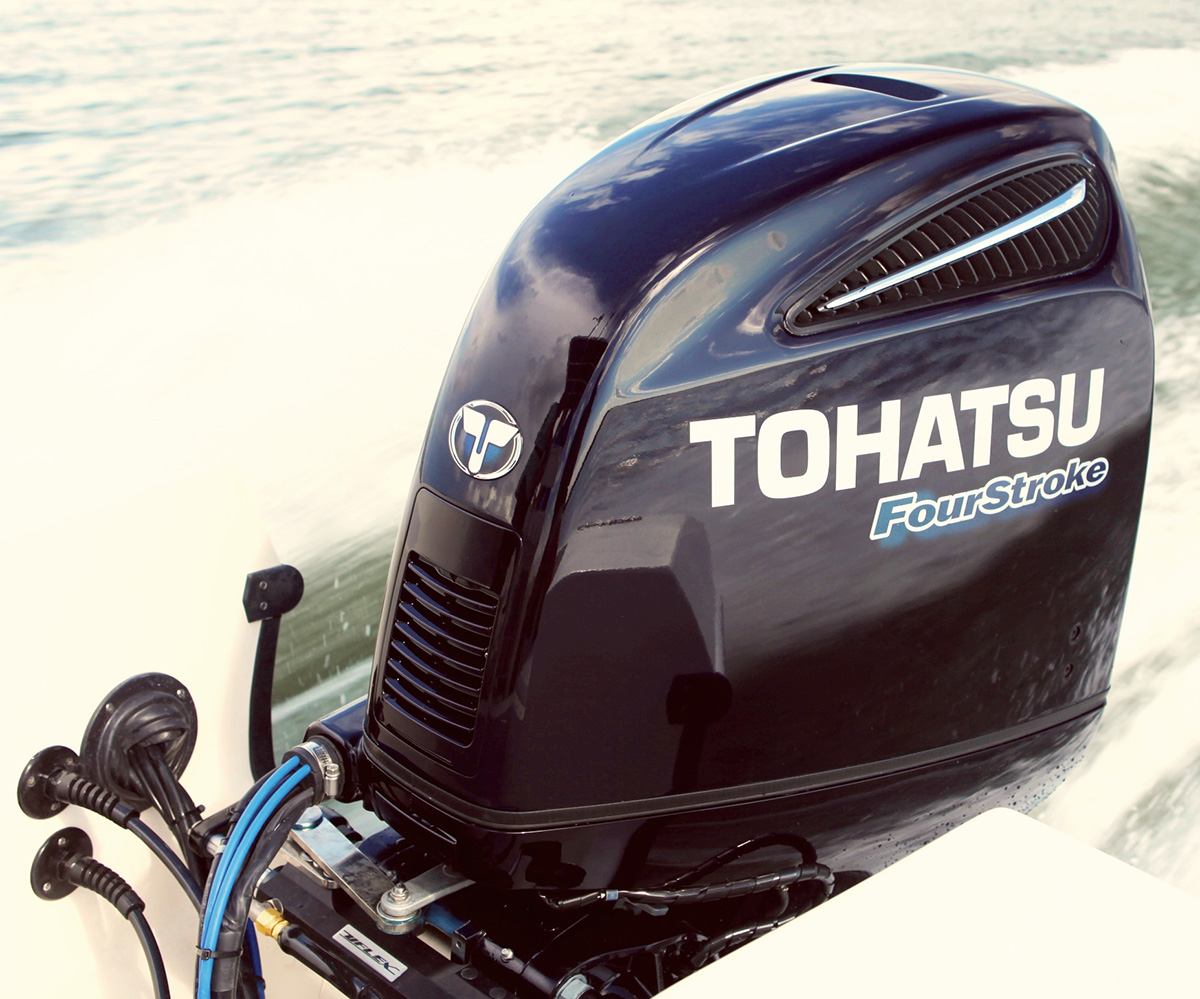
As previously mentioned, there are some new and exciting motors currently offered by the various outboard manufacturers that are excellent for repower applications. Yamaha’s Offshore Series of 4.2L V6 four-strokes are about 50 pounds lighter than their 3.4L/600-pound first generation counterparts and generate considerably more horsepower torque and punch at the prop with a 25 percent increase in displacement (Remember the mantra for four-strokes: there is no replacement for displacement.). The latest F175/F200 in-line four-strokes are also excellent repower solutions for the older V6 two-strokes, with just a touch more weight at the transom and better fuel economy. Honda (and Tohatsu) has been selling a bunch of its recently introduced BF250 four-strokes, and Mercury introduced a 350 Verado last year that steps them up into the top competitive tier. The one nuance of the Verado outboards is that they will easily repower an existing Verado installation, but because of the numerous steering, fly-by-wire controls and transom setups required, it is extremely difficult to do a repower on a non-Verado vessel. Evinrude’s new E-TEC G2 engines (150 to 300 horsepower) are a step up the two-stroke evolutionary ladder and offer excellent power-to-weight benefits, low maintenance operations and reduced exhaust emissions, with the typical peppy performance expected from this proven combustion process. Evinrudes also have a unique self-winterizing function, which is something for Northeast boaters to take a close look at. Consider the recent trend of winter weather settling in well after the New Year, and the fishing season extending beyond when most anglers have already winterized their powerplants. Evinrude’s system can put you back in the action with the simple push of a button.
Suzuki recently introduced a new DF350A V6 outboard that will be very popular with the offshore crowd. At 350 horsepower, this V6 four-stroke is the largest and most powerful outboard that Suzuki has built to date. In development for more than three years, it represents a significant milestone in engineering, design and performance. With a 12:1 compression ratio (the highest of any current production outboard), a dual prop drive, 2.29:1 two-stage lower gear ratio, twin fuel injectors for each cylinder, 24-valve DOHC setup and a huge 4.4L displacement that tips the scales at 727 pounds in the XL version, this girl is a beast and is ready to take your 35- or 40-something battlewagon offshore. The DF350A can be mounted 27 inches on center, so it will fit on more transoms, and take up less space in twin, triple and quad installations.
Real World Repower
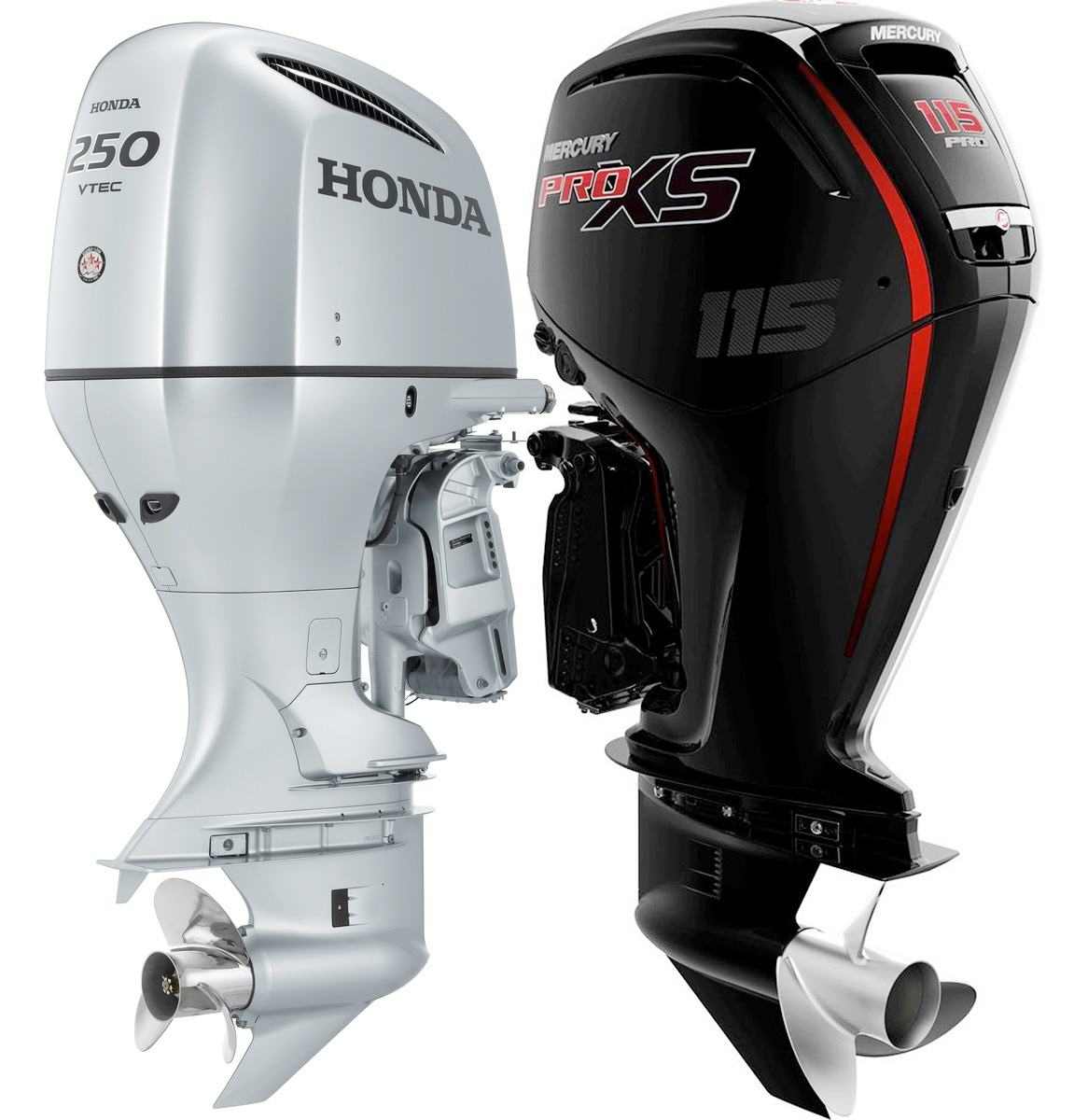 One of my fellow saltwater guides, Capt. Mike Modica of East Quogue, NY “Ship of Fools” recently replaced his burned out Yamaha 200 HPDIs at 1,530 hours (right on schedule) on his Grady-White 28 Sailfish with a pair of the svelte F200s. The entire project set him back just north of $42,000 working with a local dealer and he was able to reuse some of his old instrumentation and controls. He went from 1.2 mpg at cruising speed to 1.8 mpg making basically the same headway. As expected, he must run his new F200 four-strokes at about 300 rpm more to get the same cruising speeds as the older HPDIs (He also has four less cylinders to work with.) but the engines are quieter, smooth and produce none of the dreaded blue cloud that carbureted two-strokes were infamous for when idling at dockside or in a fluke or bass rip.
One of my fellow saltwater guides, Capt. Mike Modica of East Quogue, NY “Ship of Fools” recently replaced his burned out Yamaha 200 HPDIs at 1,530 hours (right on schedule) on his Grady-White 28 Sailfish with a pair of the svelte F200s. The entire project set him back just north of $42,000 working with a local dealer and he was able to reuse some of his old instrumentation and controls. He went from 1.2 mpg at cruising speed to 1.8 mpg making basically the same headway. As expected, he must run his new F200 four-strokes at about 300 rpm more to get the same cruising speeds as the older HPDIs (He also has four less cylinders to work with.) but the engines are quieter, smooth and produce none of the dreaded blue cloud that carbureted two-strokes were infamous for when idling at dockside or in a fluke or bass rip.
So what have I learned from all of my own real world experimentation? Upgrading to newer engines improved reliability, performance, speed and fuel economy as predicted. But the added weight of different types of fresh power also caused some center of gravity changes that affected my boat’s self-bailing abilities and required some minor adjustments to correct the problem.
In summary, it certainly pays to do your research when considering an upgrade to new outboard power, and once you realize that there are multiple considerations like fuel efficiency, transom weight, cost of ownership, maintenance schedules, parts compatibility, changes to top end and cruising speeds and overall longevity, you will be in the best position to make the right move.

